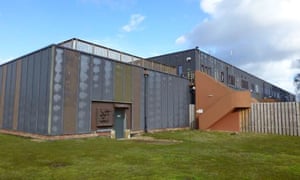
An elegant street lamp in Sheffield which was originally designed to burn off sewer gas, a hairdresser’s in Scarborough now a quaint tea-room, and the gravestone of the band leader who died on the Titanic, are among the most unusual listed buildings and other structures of the last year.
All have been listed by Historic England to protect rare survivors of what were often common types of building and structures – including a rice mill in Liverpool and a bacon smokehouse in London. The street light on Stewart Road would have looked like any other in 19th century Sheffield, but was actually correctly described as a “sewer gas destructor lamp” designed to burn off the dangerous methane and other gasses which accumulated in Victorian sewers. Now listed Grade II, it is a rare example of the lamps which were located where there was known to be a problem with pockets of gas.
The oldest site on the list is a Neolithic henge at Northorpe in Yorkshire, completely ploughed out at ground level, but still visible from the air as crop marks in a field. The most recent include a 1965 concrete house in London and a 1975 former bus shelter in Milton Keynes.

A more sinister period of 20th century history is preserved in the former RAF force protection wing headquarters at Greenham Common, built in the Cold War era complete with decontamination unit and bomb-proof bunker. As the US airforce base became famous for the womens’ peace camps which ringed the perimeter fence, the headquarters was the command site from which the command would have been given to launch the nuclear missiles. Many of the buildings were demolished after the base closed in 1993, so this has been given the second highest Grade II* listing.

The genteel Francis hairdressing salon in Scarborough was designed in the 1930s with elegantly panelled separate booths to preserve the privacy of female customers. It is now a tearoom, but the original features are well preserved including the peach coloured imitation marble shopfront.

Two playground games make the list: one is a 1960s sculpture by John Bridgeman at Acocks Green in Birmingham, designed for children to scramble on and in, the other a tall post with hooks which once held chains and ropes, a “Giant’s Stride” donated in 1866 to the children of of Townfield School in county Durham by the vicar: his wife gave skipping ropes to the girls.
The most poignant listing is the gravestone of Wallace Hartley, a hard working professional violin player when in 1912, aged 31, he got his most prestigious engagement as band leader on the doomed Titanic. According to legend the band played Nearer My God To Thee as the ship sank, and the sheet music of the hymn, together with his violin, is carved into his gravestone in Colne, Lancashire. A huge crowd, estimated at 40,000, turned out for the funeral after his body was recovered from the sea, together with his diamond ring, silver cigar case and cheap nickel watch on a gold chain. His violin also survived, in a leather case strapped to his body, and was auctioned in 2013 for £900,000. A memorial to him in the town centre, on the route of the funeral procession, has also been listed.

The listings include a spectacular Victorian gin palace, the Cauliflower hotel in Ilford, Essex, a live music venue where bands including the Small Faces and the late Ian Dury have appeared. It was listed Grade II to protect the battered but spectacular interior, a riot of stained glass, brass rails, and carved wood, when it closed in 2013. It has since reopened under new management after a petition by local residents.
Historic England retains the listing, heritage protection and grant making powers of the old English Heritage, which has now split into two organisations. The structures and sites are among 510 recent listings.
Open all references in tabs: [1 – 3]
